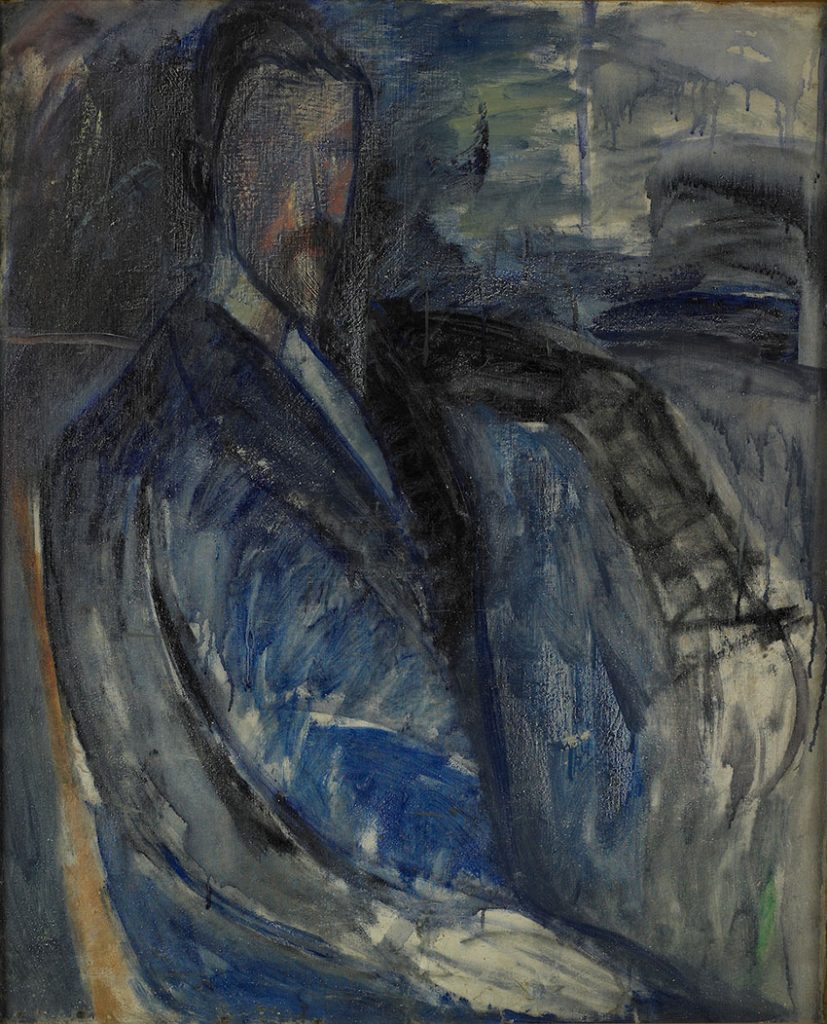Modigliani Unmasked is an exhibition of Italian-Jewish artist Amedeo Modigliani’s early drawings at the Jewish Museum in the Upper East Side from September 15, 2017 – February 4, 2018.
Amedeo Modigliani
Amedeo Modigliani (1884 – 1920) was a Sephardic Jew born in Italy. Sephardi are the old Jewish culture of Spain and the Mediterranean. Sephardi were expelled from Spain in 1492. Many came to the Americas including New York City. Like many Latin countries, Italy has a strong Jewish community that historically was very assimilated.
Modigliani moved to Paris in 1906 when it was the crucible of Modern Art. The Spaniard Picasso was in his African Period (1906 – 1909) and Cubism was just emerging. The Romanian sculptor Constantin Brâncuși was also working there and Modigliani was his follower for a while.
The similarity of Modigliani’s long faces with Brâncuși sculptures and his reclining nudes with Picasso nudes is striking. All three artists were Latins. Hmm.
In Paris, the young Modigliani had to face his outsiderness in ways that didn’t matter in the Italy he grew up in. He transformed himself from an academic into a bohemian, but didn’t have it easy.
Modigliani had tuberculosis which then was deadly, uncurable, and highly communicable. He partied hard, drinking. using absinthe and hashish, and womanizing to mask and forget about his illness.
In his normal self Amedeo was an average artist. High he became a master, but would behave strangely. In his time, Modigliani became more famous for his debauchery than for his art. Some of our concept of the tragic bohemian artist is based on Modigliani.
Modigliani Unmasked
The exhibition is organized by Mason Klein, Curator, The Jewish Museum.
This is a very intimate exhibition focused on Modigliani’s early work when he first arrived in Paris and before he developed his own style in 1915-16.
The exhibition’s core is the collection of Dr. Paul Alexandre, Modigliani’s friend and first patron. Dr. Alexandre was Modigliani’s best friend from 1907 to 1914 when war separated them forever. Dr. Alexandre bought most of Modigliani’s output during this time.
Modigliani himself destroyed much of his early work thinking it wasn’t good enough. Dr. Alexandre held his collection closely because he wanted to publish the definitive book about the artist some day.
When he began getting old, the doctor let his son Noel curate the collection. When the collection came to light in 1993 in preparation for that book, the art world was taken by surprise.
The key to the exhibition is the 1913 portrait of Dr. Alexandre. The painting, like the artist, was unfinished. Half the face is barely rendered. Yet in the work you can see the blending of something European with something African into something Modern.
Looking at Modigliani Unmasked, the way that Mason Klein organizes the exhibition, makes me think that we make a huge mistake in attaching our personal identities to a nation or a religion.
Being an immigrant isn’t easy. Here they think I’m from there. There, they think I’m from here. Caught in the middle, the truth is that we are mixed into something altogether new.
It doesn’t matter whether we are rich or poor, who we pray to, where we come from, or where we live now. Taking off the mask leaves nothing but our common humanity.
Modigliani loved to dream. Behind the mask, we all have the same dreams. That provides a way forward into the future. Just keep dreaming. We are all dreamers.

